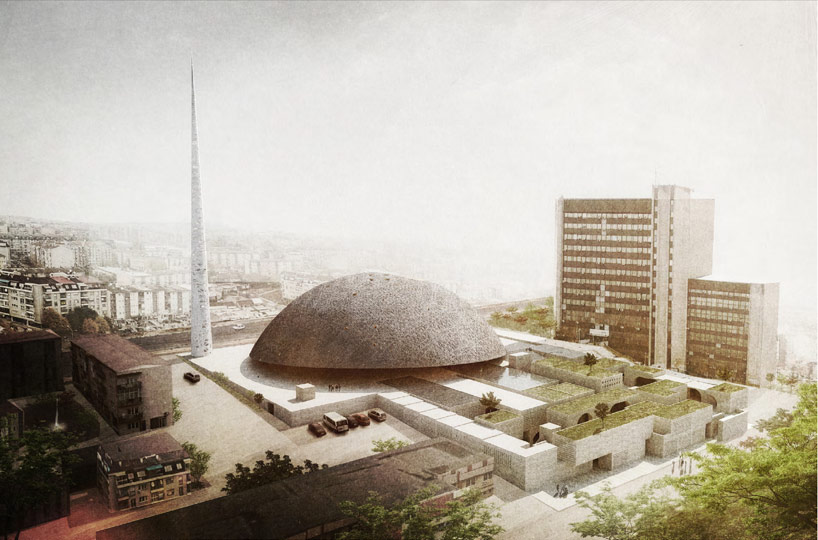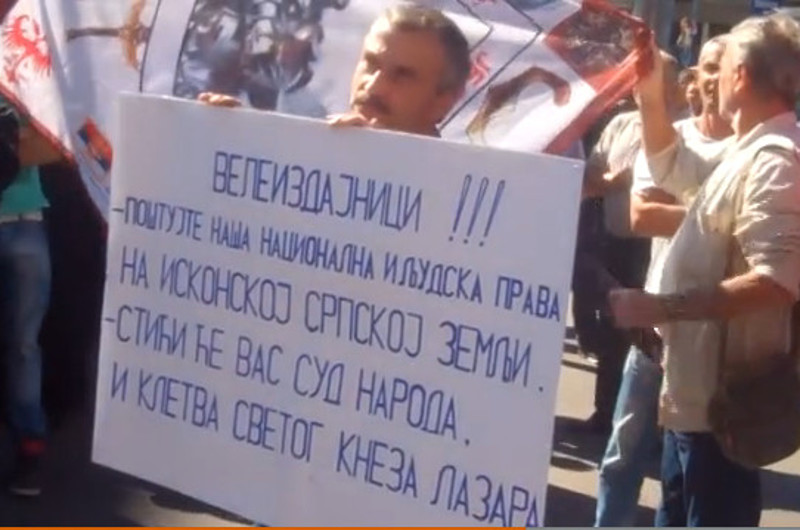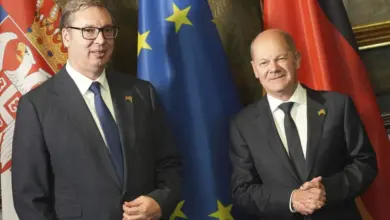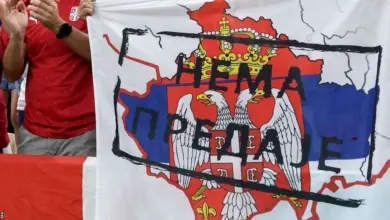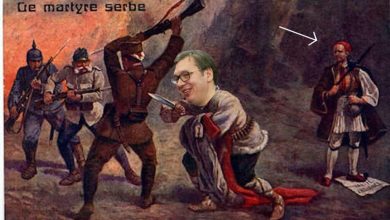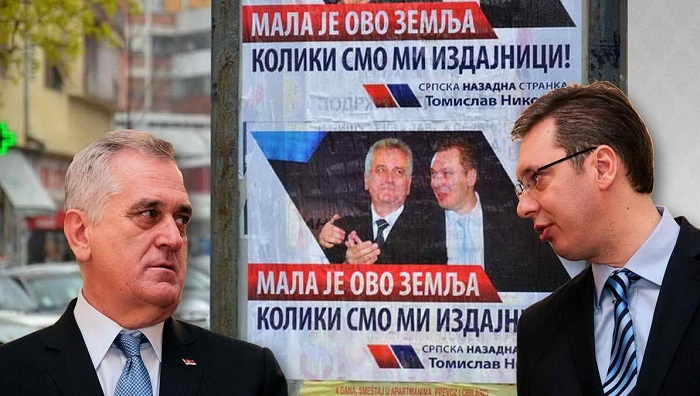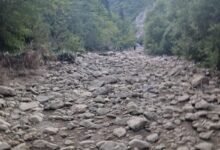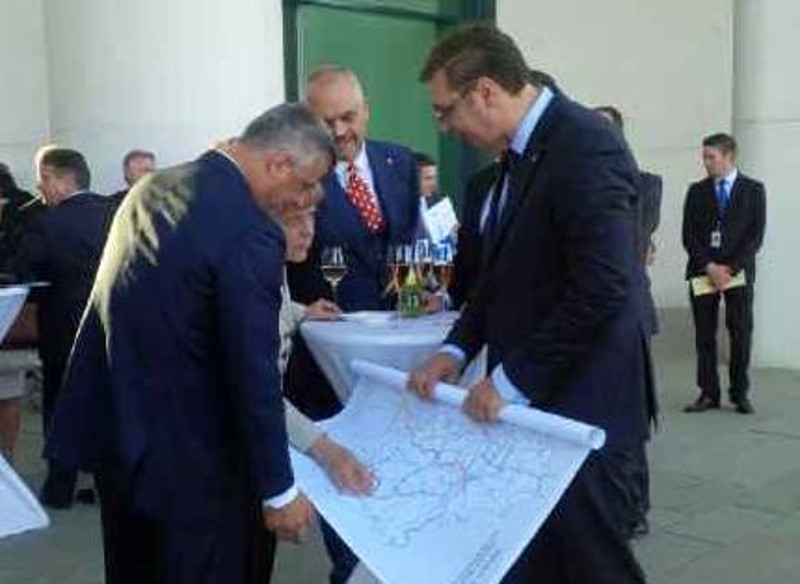Numerous analyses are being published in an attempt to explain Serbian-Albanian relations. One of them is the book by Miranda Vickers and James Pettifer entitled Albania – from Anarchy To a Balkan Identity(1), published by Nea in Belgrade. As the authors are known experts on Albania and Albanians, the message of the book is very important for policy makers, primarily American and British Governments as leading political actors in international politics regarding Albania and Yugoslavia.
However, in spite of the profusion of information significant for political sciences as well as politics, the book contains numerous fundamental errors which lead the readers to conclude erroneously that in the Serbo-Albanian conflict Albanians are in the right, while the Serbs are aggressors and imperialists. For this reason, the focus of this analysis is, primarily on the errors contained in the book, without in any way denying the value of what can be useful and important for readers in Serbia and in foreign countries. It cannot be denied that the authors made a valiant effort to get to know Albania and Albanians from on-the-spot firsthand experience, to get acquainted personally with many actors of the Albanian political scene and to understand their attitudes. They strived also to analyze in detail the political and social scene in today’s Albania and to present it truthfully to the readers, all of which makes their book very well documented. It may even be considered indispensable for the understanding of the contemporary political reality of Albanian ethos (2). However, this book contains also a number of errors, which are easily seen as such in the light of well-documented and academically sound writings of Albanian authors themselves. The authors of the book state: “Dukadjin was responsible for codification of unwritten laws embodied in a canon, a form of primitive constitution inherited from the Illyrians” . This clearly shows that they have wholly accepted the thesis of the Albanians’ direct descent from the Illyrians (3). However, there is absolutely no proof of this. The Albanians appear in history very late, only in the11th century , while the Illyrians disappeared from the historical scene in the first half of the 3rd century . This means that between the disappearance of the Illyrians and the appearance of the Albanians there is a hietus of about eight centuries (5). It may be that the Albanians are, indeed, the descendants of the Illyrians, but it is a claim that no one can make with any certainty.
On page 15 we find this statement: “There was also an opening up towards secular Islamic countries like Egypt and Libya” (6). A secular country is a country in which religion is separate from the state. Therefore, the terms Islamic and secular are linguistically and logically incompatible, for either a country is Islamic or it is secular. Both countries mentioned are in their constitutional enactments defined as Islamic, i.e. they have a state religion, which limits the rights of other religions (7). This claim is reiterated on page 220, where the authors mention “secular and leftist Islamic countries (8),” showing that they paid no attention to the theocratic nature of Islam. Thus it was difficult for them, in spite of their long stay in Albania and among Albanians, to understand correctly the true nature of Albanian society, which is over 80 percent Muslim, counting those Albanians who live in Yugoslavia, Macedonia and Albania. If to this we add the number of Albanians in Turkey this percentage would be even larger. On page 96 the authors state: “During their history Albanians moved with relative ease from one religion to another—they were Catholic, Orthodox or Muslim, according to their interest at the time (9).”
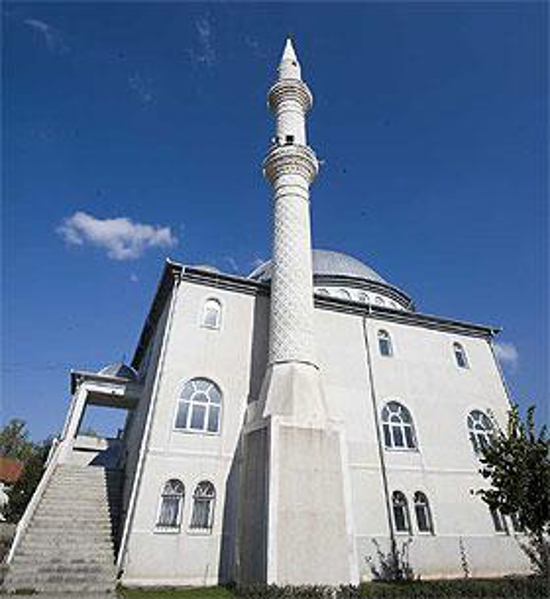
If this statement is correct in the case of individual conversions from Roman Catholicism to Orthodoxy and vice versa, it certainly is not correct as regards conversion to Islam. When the Osmanlis conquered, or rather annexed, Southern Albania after 1417, as stated by reputed Albanian historians Puto and Pollo, “the Turkish rule in Southern Albania was a great misfortune. The Turks destroyed everything without exception… Their chroniclers proudly pointed out what great loot was won in Albania, what wholesale burning of towns and villages was perpetrated, with what indescribable savagery the local inhabitants were treated, and how children were taken away from their homes to be made Janissaries or sold on slave markets (10).” But, as all this was executed in the name of Islam, as one of the most famous historians of the Osmanli Empire, and a Turk himself, Halil Inalgic (11) claims, saying that the Albanian people did not accept Islam. An Albanian historian Atanas Gegaj in his study says: “It could be said that the Christian element was predominant in Albania until the 18th century and continued to fight for its religion and nationality (12).” The most famous example is George Kastrioti, the renowned Scandarbeg, who was of Serbian descent, (13). He was, according to Albanian sources, leading a bloody civil war against those Albanians who accepted Islam and joined the Osmanli army. His main opponents were an Albanian Muslim, Balaban-pasha born in Mata, and George’s nephew Hamza who fought against his uncle. As another Albanian historian Rexhep Krasniqi claims, Balaban-pasha captured seven generals of George Kastrioti and had them flayed alive because they refused to renounce Christianity (14).
Rexhep Krasniqi, also states that George and his father John accepted Islam under duress in order to save their lives, and that George was then given the name Scandar. After the battle at Nish in 1433 Scandar forced the Sultan’s scribe to confirm that he was again the governor of the town of Kruja in Albania. “When he returned there he again took his father’s religion which he had renounced only out of necessity.” He massacred mercilessly all Albanians who refused to return to Christianity. This was how began the holy war of Albanian Christians against the Muslims, says Rexhep Krasniqi, an Albanian with a Muslim name (15). This is confirmed by another Albanian Atanas Gegaj, who states that the first man to be killed in Kruja was a Muslim, commander of the town, Hasan-beg. Gegaj adds that Albanians reacted to this news with great joy and that they all hastened to demolish all signs of Islam and return to the country its Christian character. Gegaj says: “The die is cast. Scandarbeg will from now on fight not only for the independence of the fatherland but for the salvation of Christian civilization from the danger of Islam as well (16).” He also confirms that George and his brother converted to Islam by force in order to save their lives.
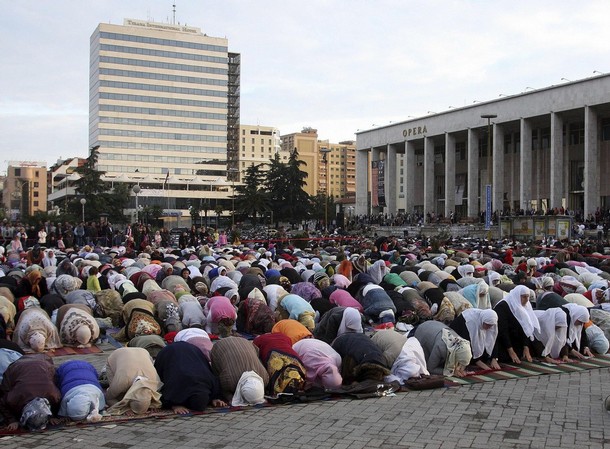
In spite of such harsh treatment Albanians resisted Islamization for three centuries. At the beginning of the 17th century, jizyah, a tax in Islamic fiscal system imposed on non-Muslims, amounted to 305 aspras. By the middle of the century it was increased to 780 aspras (17). Those who had no money lost their lives. This, together with many such constant abuses, was the reason for Islamization.
Vickers and Petiffer on page 97 state: “In spite of the widely accepted view that the Osmanli rule mainly aspired to the expansion of Islam, there was little official encouragement to convert Empire’s Christian subjects [to Islam] (18).” However, the facts tell a different story. The essence of Islam is to proselytize, and Islam, as the Koran says, is the basis of the state. Therefore, to deny the need to convert the people to Islam would mean to deny Koran, to deny Muhammad. The Koran says: “And who seeks a religion other than Islam, it shall not be accepted from him, and in the life to come he shall be among the losers.” (Sura 3:86) (19). Had it not been thus, Turkey would not exist today. Almost the entire territory of today’s Turkey was Byzantine until 1071; and the population of this territory was predominantly Greek and Armenian. There were inhabitants of other ethnic groups, but there were no Turks (20). Only after a violent conquest did Turkey start to establish the foundations of its state on the territory it occupies today. It was the country of the Greeks and the Armenians. Nearly three hundred years later, in 1340, in this state ruled by Muslim Turks, lived eight million inhabitants, of which six million were Christians, i.e. Greeks and Armenians, and only two Muslim Turks (21). Where did all the Christians go? Some managed to leave the country and some were massacred. But the overwhelming majority was first Islamized and then Turkicized. They are inhabitants of today’s Turkey. They are Turks, who thanks to Islamization have changed their genotype and phenotype and, having once belonged to a Mongoloid yellow race, now became predominantly Caucasian, as is claimed by probably the greatest modern historian of the Arab world Philip Hitti (22).
The Shariat law is the most functional expression of Islam. It guided the ideology of the Osmanli Empire and it was implemented through fatwas (religious/legal opinions prescribing appropriate behavior in given situations). Collections of these fatwas, which are numerous, show, that contrary to what Pettifer and Vickers claim conversion to Islam was forced and ordered by the highest Osmanli religious authority, the Sheik ul Islam. Fatwas are given in the form of questions, which a Muslim puts to the Sheik ul Islam and to which the Sheik gives the answer. For instance: the fatwa may run like this: “If a representative of authorities ties the unbeliever Zaid by the neck and starts to strangle him, and Zaid, to save himself, says let me go, I am Muslim, is the status obtained in this fashion considered legal ? The answer is yas“ (23) The result is that the Turks themselves today deny that their community exists as an ethnic entity. Answering a journalist’s question, a former Turkish chargé d’affaires in Belgrade, Egin Oba said: “ Turkey created a national state in which being a Turk does not mean being a member of any ethnic group, but being a citizen of Turkey. Twenty-four different ethnic groups live in Turkey today (24).
It is interesting that Pettifer and Vickers did not see that the Albanian historians themselves contradicte their claim that the Oslmanlis did not spread Islam by force. Thus Albanian authorities Puto and Pollo say: “The Sultan acceded to religious pressures on the Albanian population. At the end of the 16th century began the first campaign for Islamization of Albanians the goal of which was to make of them Muslim subjects connected with the destiny of Osmanli Empire (25).” On page 97 Pettifer and Vickers further say that the Russo-Osmanli wars of the 18th century considerably accelerated the decline of the Osmanli Empire which brought no noticeable change in previous Osmanli politics of religious tolerance.” This must be understood to mean that since their conquest of Albania until the 18th century the Osmanli authorities treated Albanians with religious tolerance. But, as we can see, the Albanian sources deny that. Besides, can it be logical to claim that the state which is based on Islam can be considered religiously tolerant?
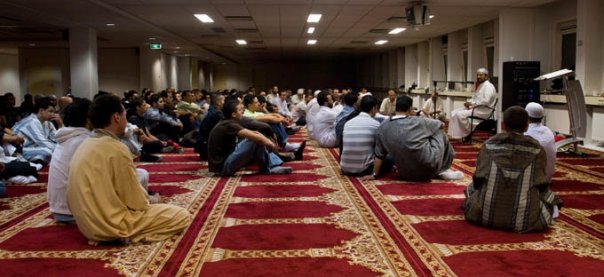
Islam prohibits religious tolerance, and according to the Shariat law, a Muslim who abandons Islam must be condemned to death (26). On page 97 the authors say: “As Muslims they were allies of the Osmanlis who protected them from Slavonic and Greek pressures (27). Above all, there is the well-known fact that Islam neither knows nor acknowledges the notion of nation (28). Therefore, Albanians as a nation did not exist for the Osmanli administration, and as Enver Hoxha says: “Fraternity in Islam was a principle and a legal question. As a principle, spiritual and material unity had to exist among members of a community and between the rulers and those who are being ruled.(29)” Therefore, there could be no alliance between the Osmanli and the Albanians, for both of them were Osmanlis in the sense that they lived in a state ruled by the Osmanli dynasty. It was as much their state as it was the sate of the Turks in as much as the latter were Muslims in contrast to other Turkish nationals who were not.
When writing about the system of millet, Pettifer and Vickers show that they are familiar with it, but their story about the alliance between the Osmanlis and the Albanians shows their lack of clear understanding of the socio-political dimensions of the millet system. Furthermore, their mention of the Osmanlis having to protect the Albanians from Greek and Slavonic pressures contains yet another inaccuracy. How could the Greeks and the Slavs pressure Albanian Muslims in the country which is ruled by the Albanians? Stavro Skendi, an Albanian, speaks to this point when he says that in the course of the history of the Osdmanli Empire at least 30 Albanians held the office of Grand Vizier, which would correspond to today’s office of prime minister (30). Then, on page 98 the authors say: “the relations between religious groups were relatively friendly and, like in the past, they acted freely” (31). They obviously have in mind inter-religious relations between two World Wars. In view of the fact that George Kastrioti was fighting especially against Albanian Muslims, how can it be claimed that the relations between various religions were friendly?
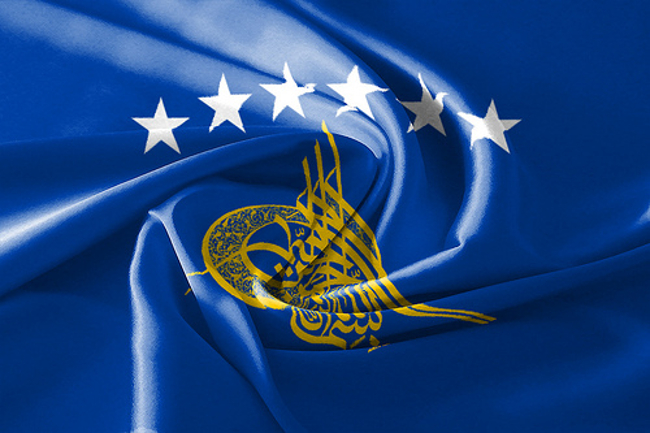
A veritable multitude of data tells us that Albanian Muslims killed their Christian fellow-Albanians. It was precisely the threat of death and torture by Muslim Albanians, which forced Christian Albanians to embrace Islam. Ethnic Turks cannot primarily be blamed for this because the majority of Muslims in Albania was made up of indigenous but Islamized population. Trough the entire history the Christians and the Muslims were on the opposing sides. The Roman Catholics sided with the Italians and the Austrians; the Orthodox sided with the Russians and the Greeks; and the Muslims served the Sultan and the Caliph, the head of Islamic world in Istanbul. The Orthodox town of Voskopoja, a center of enormous economic and cultural importance, whose highly developed school system was on the par with other European educational systems, was demolished by Albanian Muslims, who treated their Orthodox fellow-countrymen with the ferocity of wild beasts. This episode is very well described by Albanian historians, such as Arben Puto, Stefanaq Pollo, Kristo Frasheri, Stavro Skendi and others. Frasheri writes: “The tragic end of Voskopoja, a town with about 20,000 inhabitants, is an example of the situation in Albania. Having refused to become the prey of feudalists in Southern Albania, the Voskopeans were attacked three times in 1769, in 1772 and 1789 and their town looted. After ten years of destruction, robbery and wars, Voskopolis disappeared from the face of Albania (32).”
Describing the relations among the members of three religions between two World Wars, Viron Koka, contemporary Albanian historian, contradicts the claims Pettifer and Vickers. He says: “Priests continued like before to put the interest of religion above the interest of the nation and to fight severely against all progressive manifestations even against the independence of Albanian people (33).” Koka adds: “Catholics considered Muslims a horde of primitive Asians deprived of national feelings and unworthy of being comprised within the term of Albanian nation (34).” The extent of the hostility among the members of three religions is best illustrated by the fact that in the eighties of the last century, during Hoja’s greatest reign of terror, after decades of religious persecution in Shkoder(Scutari), where the concentration of Roman Catholics is greatest, and in spite of official Albanian propaganda, Roman Catholics and Muslims chose for their spouses members of their own religion. The number of mixed marriages between these two religions did not surpass five percent (35).
The lack of attention Pettifer and Vickers pay to the Albanian Islam and the forms of its phenomenon is particularly evident in the following statement: “The Bektesis who performed very perfunctorily traditional Muslim rites, called for the cleansing of, and retaliation against (Sunni) Osmanli authorities and preached tolerance towards all non-Muslim beliefs (36).” There are only two accurate pieces of information in this statement. First, the Bektesis performed only perfunctorily all Sunni Muslim rites. However, they did this because they had their own rites. Second, by the end of the19th and the beginning of the 20th centuries the Bektesis had more awareness of the Albanian ethnic character which distanced them from the Turks than did others, i.e. Albanian Sunni Muslims who felt more closely connected with the Turks. However, it is more than clear that the Bektesis did not express collectively this awareness of their ethnicity in relation to the ethnic Turks. If expression was given at all to this ethnic awareness, it was done by individuals or very small groups which were more numerous among the Bektesis than among the Sunnis. However, a large majority of both the Bektesi and the Sunnis remained as connected with Turks, in the ethnic sense, as with the Sultan to whom they were collectively loyal and were, therefore, against the independence of Albanian lands from the Osmanli Empire. For this reason they proudly called themselves the Sultan’s sons. Writing about one of the most famous Bektesi, Sami Frasheri, who was renowned as a champion of the Albanian national awakening, Frasheri Kristo, a famous Albanian historian, says that he spent his entire life in Instanbul and that he felt an extraordinary connection with the Turkish people (37).” Turkish historians consider Frasheri one of the founders of Turcism and Pan-Turcism because he contributed to the awakening of modern the Turkish nation through his writings in Turkish newspapers (38).
It is quite clear that Bektesis are not against Sunni Muslims. That, of course, does not mean there was no hostility and persecutions, but the basic Islamic connection between them was never broken as is wrongly concluded by the same authors. The existence of this unbroken connection is confirmed by the Bektesis themselves. This was done in independent Albania, at the time when they could say what they wanted to say. Thus, for instance, Selman Jemal baba, the head of the Bektesi monastery near Elbasan, said: Bektesism is nothing other than the real Islam based on the Koran (39),” and baba Rexhepi, the head of the Bektesi monastery in Detroit, USA points out: “The Bektesis, especially those from our tekia, Asim baba near Girokostra, did not want to be very distant from the Sunnis. But no one wants to believe so. Generally speaking the Bektesi approve the verses of the Koran and hadis. (40)” The “tolerance of the Bektesi,” which was undoubtedly greater than that of the Sunnis can be seen in the following example. Idayet Beciri, the head of the party of “National unity” about whom Vickers and Pettifer say that he is for altering the borders in the Balkans (41) and whose party, as is claimed by one English source, “is neo-fascist and calls for war with Serbia.” At the same time the source states that this party is explicitly hostile towards Albanian Greeks who are Orthodox (42). According to the same source, “National Unity” is very tightly connected with the new-founded Bektesi dervish community whose chief Rashat baba Bardhi 1991 met with Beciri and blessed his party way back in 1991 (43). How Bektesis behaved in the past is shown in the example of Ali-pasha Tepelini, himself a Bektesi (44). Speaking of himself he said: “There is no minute in a day that someone does not wish my death. And how can it be otherwise? It is already past 40 years that I have done evil to the entire world. I had more than 30,000 people killed or hanged. And it is known that if I live for a few years more, I will kill many others (45).”
Pettifer and Vickers in several places in the book say: “large parts of North and West Albania belonged to Serbia and Montenegro. (46)” This, primarily, refers to Tetovo, Debar, Kosmet, etc. If the authors have in mind that in these territories prior to the Balkan Wars (1912-1913) the Albanians were in a majority, they are right. But, is that criterion sufficient? If we were to apply this criterion alone, the town of Rube in France would belong to Algeria, because Algerians constitute a majority in it. But, if considered how Albanians came to be in a majority in these areas the conclusion would be different. René Pinon, a French historian, has this to say about it: “In 1906, one quarter of the population of Tetovo’s valley Polog was Albanian, and three quarters Bulgarian, Only four years later proportions were inverted. Thanks to his rifle an Albanian managed to get the land he liked” (47). If Tetovo now has an Albanian majority the same is not true of the municipality of Plav in Montenegro which Pettifer and Vickers say is Albanian (48). The majority of the autochthonous population of the area is ethnically Serbian, but the majority of them is Muslim by religion. The important fact is that they are not Albanian. The censuses of 1961, 1971, 1981 and 1991 show 16.55, 19.11, 20.63 and 20.72 percent respectively as Albanian (49).
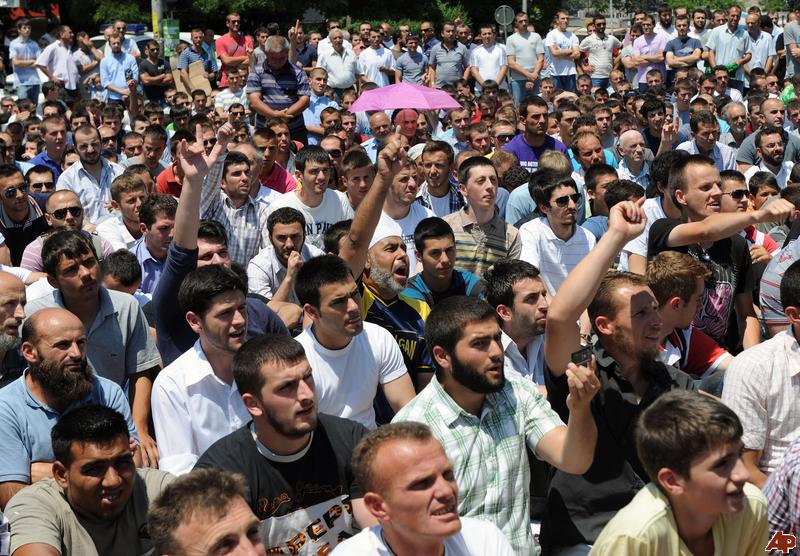
On page 178 the authors say that the situation with problems of the Macedonian Albanians is completely different. Macedonian Albanians are seen by Albania as very Islamized – which is only a part of the truth (50). The first question we should ask is why Albanians from Albania would say something of this sort about their fellow-Albanians in Macedonia, if they wished them well? Do they really want to defame them in the world? However, that fact is not only visible to the naked eye but is also confirmed by most serious research work and by the statement of the head of the Albanian Islamic religious community. Thus already in 1972, when communist anti-religious propaganda was at its worst, research into the piety of the population in Donji Polog near Tetovo, carried out using the most rigorously scientific methodology, confirmed that more than 77 percent of Albanians are Muslims who strictly respect all religious precepts, while 15.2 percent were vacillating believers (51). That means that 92 percent of Albanian Muslims in this region of Macedonia stated they were believers. When asked what kind of believers Albanians in Macedonia were, the president of Meshihat, i.e. chief religious authority for Macedonia Suleyman Rexhepi, said: “… and as regards the path which IC (Islamic Community) will take, there is no doubt that our path and the path of all Albanians is Allah’s path (52), and added: “Albanians from Macedonia are very good Muslims and believers, and I would not agree with you that a significant number among them deny Islam. Allah’s religion cannot be denied (53).” Therefore, if the highest cleric of the Albanian Islam, whose duty is always to ask his believers to be even more devout than they are, says that he is not worried about the state of their piety, we cannot see why anyone would question that fact? It is particularly important that the question was raised in the context of a political organization. The Democratic Party of Arben Jaferi, which is mentioned by Pettifer and Vickers, was formed on July 6th 1997 and immediately adopted the slogan “with Islamic spirit and Albanian blood (54).” This shows that the party has retreated from its formally secular character, which is understandable to every expert on Islam. Islam does not tolerate secularism, and every political party that has the support of IC is anti secular, anti democratic and anti national for Islam prohibits nationality, regardless of what its leadership says publicly. Besides, the windows of kiosks in Pristina mosques prominently display the issues of previously mentioned Naqavi translated into Albanian. The message it brings is clear – today you may be Albanians, but if tomorrow you do not subordinate the interests of the nation to the interests of Islam, if you are not against Albanian atheists, Roman Catholics and Orthodox, you will go to hell. For Allah wants it so!

It has already been said that over 80 percent of Albanians are Muslim, so without knowing Islam it is not possible to know Albanians. If former Muslims and Albanian Christians who are now converted to atheism consciously spread the incorrect story of a laicized and secular Albania, serious analysts must not be duped by it, for if they are they will understand nothing of the situation in Albania. It is curious that in several places Vickers and Pettifer emphasize the revitalization of religion, particularly of Islam, without ever questioning – where does it lead! More democracy means more religious freedom, and more religious freedom for Islam means the end of secular and national Albania! And there is not an iota of doubt that this is so (55). The example of Turkey bears witness to this. Authors claim that in the region of Istanbul alone live some half a million Albanians (56). And it is the most discriminated against community of Albanians in the world. They are forbidden to have schools in Albanian or declare themselves as Albanians; they are forced to be Turks. In addition, no Albanian has ever raised the question of the rights of their fellow-Albanians living in Turkey. It means that Islam means more to these Albanians than their national identity and, abandoning themselves to Turkey, they voluntarily renounce their national identity and accept Turkish as their mother tongue. During communism, Albanians in Albania even praised Turkey for these actions, which only goes to show how close Islam is to albanian communism (57). A lot of people in Albania still feel vaguely like this because of the communist propaganda to which they were subjected for half a century. But what does this mean viewed from the perspective of eternity Allah has in mind for them? When Albania is Islamized, and it will happen, Albanian nation will disappear; the Muslim nation will be the only one. So that Albanian Jihad will be the only path to follow (58) and it will lead towards Tetovo, Skoplje, Belgrade and the very heart of Europe. Besides, the map of “Great Albania,” which until now did not comprise Nish within its borders, now does (59). These facts, perhaps, seem pessimistic, but as Winston Churchill once said: “An optimist is only a badly informed man.”
Footnotes
1. Miranda Vickers & James Pettifer, Albania – from Anarchy to a Balkan Identity, C. Hurst & Company LTD 38 King Street, London. The date of the edition is not stated, but judging by internal evidence and the fact that Ivan Djordjevi?’s translation of the book appeared in Yugoslavia in 1998 the date of publication is probably 1997. Miranda Vickers is a historian specializing in the Balkans and a regular contributor to British journals and newspapers on Albanian issues. James Pettifer is, also, a regular contributor to English reviews, newspapers and wherever decisions on the Balkans are discussed. In addition, he is a visiting professor at the Insitute for Balkan studies at the University of Salonika. This book presents an analysis of the Albanian situation between 1985 and 1996.
2.Working primarily with Albanian materials issued by the Albanian Academy of Sciences, M. Jevtic, professor at the School of Political Sciences at the University of Belgrade, specializing in political science of religion , has published a great number of articles in domestic and foreign scientific journals and compendia and more than a hundred articles in the domestic press on Albanian issues.
3. Vickers and Pettifer, ibid., p.132
4. See: G. Stadtmuller, Forschengen zur albanischen Frühgschichte , Wiesbaden, 1966, or see: A. Ducellier (an albanofile), L’rArbanon et les Albanais au XI siècle, Travaux et Mémoires, 3, 1968, pp. 357, 360
5. Ibid.
6. Vickers and Pettifer, ibid. p.15
7. One of the world’s most famous Islamologists Bernard Lewis in his book Le retour de l’islam , Paris, 1985, pp.186-187 states that article 2 of the 1971 Constitution of Egypt reads “Islam is the state religion… Islamic law is the main source of law”; then article 2 of Libya’s provisional constitution of 1969 states “Islam is the state religion…”
8. Vickers and Pettifer, ibid. p. 220
9. nIbid. p. 96
10. Arben Puto and Stefanaq Pollo, Histoire d’Albanie dès origines à nos jours, Roanne, 1974, p.75
11. Inaldzik Halil, Osmanso carstvo [the Osmanli Empire], Belgrade, 1974, p. 11
12. A. Gegaj, L’Albanie et l’invasion turque au XV siècle, Paris, 1973, p. 159
13. See: Encyclopaedia Britannica, vol. 20 Chicago, London 1960; see also Jazexhi Olsi, Albanians and Islam: Between Existence and Extinction, December 20, 2003, www.network54.com/forum/38296
14. R. Krasniqi, Georges Kastrioti-Skandarbeg, Paris, Firenze, 1983, p. 154
15. Ibid. pp. 132, 133, 135
16. A. Gegaj, ibid. p.46-47
17. A. Puto and S. Pollo, ibid. p. 105
18. Vickers and Pettifer, ibid., p.97
19. The holy Quran with English translation and Commentary , Islam International publication Limited,Islamabad,published in U.K., 1988
20. See: G. Ostrogorski, History of the Byzantine State, Oxford , 1956 or American edition of 1957, New Brunswick , “Rutgers University”
21. Nalbantoglu H.U Osmanli Toplumunda Tarim Teknolojisi, Arti-urun ve Kent Ekonomisi, Turkiye Iktisat Tarihi Semineri, 8-19 Haziran, 1973, Ankara, 1975, p. 55-56; or see S. Vryonis, The Decline of Medieval Hellenism in Asia Minor and Process of Islamization from the eleventh through fifteenth centuries, Berkeley, London , L.A. , 1971
22. F. Hiti, Istorija Arapa, Sarajevo, 1988, second photostat edition p. 195
23. Osmanskite izvori za islamizacionite procesi na Balkanite [Osmanli sources for Islamization processes in the Balkans], Sofija, XVI-XIX vek, Sofia, 1990 , p. 294
24. Politika, Belgrade, July 26, 1996, p. 2
25. Puto and S. Pollo, ibid., p.105
26. According to The Koran with a translation into Serbian, edition of Fahd, King of Saudi Arabia, Medina, Hijra 1412 year, p. XII, note 33, item 1
27. Vickers and Pettifer, ibid., 97
28. Literature regarding this question is very voluminous. Suffice it to mention the book of Ali Muhamed Naqavi, Islam and Nationalism, Teheran, 1984. Or perhaps cite the position of Feisal, King of Saudi Arabia, which is evident in his address to the World Islamic league: “Dear brothers, today we see the Muslim nation suffer from non-unity, quarrels and disagreements,” quoted in The Muslim World League Journal, September-October 1987, p.2
29. Enver Hoxha , Réflexions sur le Moyen-Orient, Tirana , 1984, p.494
30. Stavro Skendi, The Albanian national awakening 1878-1912, Princeton , New Jersey, 1967, p.21
31. Vickers and Pettifer, ibid., p.98
32. Puto and S. Pollo, ibid., p. 110; S. Skendi, ibid., p. 22; The treatment of Christians at the hands of Muslim Albanians can be seen in the following example. There is an area called Himara in southwestern Albania. Its inhabitants, Albanians of Christian Orthodox religion, called Himariots were attacked by Muslim Albanians led by Ali-pasha Tepelini. On Easter 1798 all the peasants were in their churches expecting the priest to greet them after the service with the words “Christ is risen”. At that very moment Ali-pasha’s soldiers burst into churches and slew all the priests and took part of the believers into slavery. This was the fate of villages Nivica-Bubari and Sv. Vasilije. Subsequently, inhabitants of that region converted to Islam in huge numbers. Ali-pasha then sent missionaries and built mosques and dervish monasteries in every village.Quoted from Gabriel Remerand, Ali de Tebelen pacha de Janina, 1774-1822, Paris, 1928, p.55
33. Viron Koka, L’idéolgie réactionaire du clergé dans l’années 30 du XX siècle, Studia Albanica, Tirana, no. 1/1969
34. Ibid.
35. Stephen Bowres, Islamic factor in Albanian policy , Journal of the Institute of Muslim Minority Affairs, no. 1/1984, London, Jeddah , p.1127
36. Vickers and Pettifer, ibid., p. 101
37. Kristo Frasheri, Semsudin Sami Frasheri idéologue du movement national albanais, Studia Albanica, no. 1/1966
38. Ibid.
39. Clayer Nathalie ,L’Albanie pays des derviches , Berlin , 1990, pp.78-79
40. Ibid.
41. Vickers and Pettifer, ibid., p. 142
42. Marko Milivojevic, Wounded eagle, Albania’s fight for Survival, Institute for European Defence & Strategic Studies, European Security Study, London, no.15, p.8
43. Ibid., p. 19
44. S. Skendi, ibid., p. 13
45. Gabriel Remerand, Ali de Tebelen pacha de Janina, 1774-1822, Paris, 1928, p. 226
46. Vickers and Pettifer, ibid. pp. 143-182
47. René Pinon, L’Europe et la jeune Turquie, Paris 1911, p .305.
48. Vickers and Pettifer, ibid. pp. 181
49. Etnicki sastav stanovništva Srbije i Crne Gore i Srbi u SFRJ [Ethnic composition of Serbia and Montenegro and Serbs in SFRY], Belgrade, 1993, p. 216
50. Vickers and Pettifer, ibid. pp. 178
51. S. Kostovski , Religijata kaj seleskoto naselenie vo Dolni Polog [Religion of the rural population in Dolni Polog], Skoplje,1972, p. 99
52. Preporod, (Islamic informative paper), Sarajevo, Novembar 1, 1991, p. 12
53. Ibid.
54. Memorandum za golemiot albanski nacionalizam i separatizam [Memorandum on greater Albanian natinalisam and separatisam]. Association of Macedonian Ethnologists. No. 03-43, August 16, 1997
55. That is why the religion in Albania was abolished. “The history of our people shows at what extent it suffered from religion… how it stirred up dissension and provoked fratricidal wars. That is why… nothing connects us with religion…not only as atheists but as well as Albanian patriots.” Quoted from: Enver Hoxha, Le socialisme en Albanie, II, Paris, 1994, p. 199. For this reason the head of the Albanian Orthodox Church Noli, Albanian nationalist moreover , was against the catechism in schools. Quoted from: Koqo Bihiku, Les Pamphlets Politiques de Noli dans années 1925-1932, Studia Albanica, no..1/1987.
56. Vickers ande Pettifer, ibid., p. 221
57 Enver Hoxha said: “During their histories Albanian and Turkish peoples maintained friendly relations, sincere friendship of Turkish people for Albanian people…was clearly seen in the fraternal welcome of our Kosovo brothers who were exiled from their land in Yugoslavia. Quoted: Enver Hoxha, Oeuvres choisies , volume VI, Tirana, 1987, p. 434 and 435
58 Preporod, Herald of Meshihat , i.e. had authority of Islamic community in BIH(Bosnia and Herzegovina) in the issue from October first 1991, p. 22 says : “Jihad in Islam is the climax of its excellence…Jihad…is the guide through all the past till doomsday” or, say in Takvim for 1992, annual of presidency of Islamic priests of BIH p. 68: “ Islam aspires to destroy all the states and governments anywhere on the face of the earth that are opposed to the ideology and the programme of Islam… Islam seeks the earth, not only a part of it but the entire planet” This text was published first in English in: Al-Mawdudi, Jihad in islam , The holy Koran, P.O. box 7492 Beirut, Lebanon, 1983
59 See, for instancee, site: www.frosina.org. Gazeta Sciptare, an Albanian newspaper, also wrote on this topic. One of its articles was published by Politika, Belgrade November 5, 1998, p.1.. Even Osama bin Laden himself visited Albania in the mid 1990s of the last century. His visit was organised by the then chief of the Albanian security agency SHIK, Bashkim Gazidede, At that time bin Laden met with many highly placed Albanian leaders.
Serbianna

